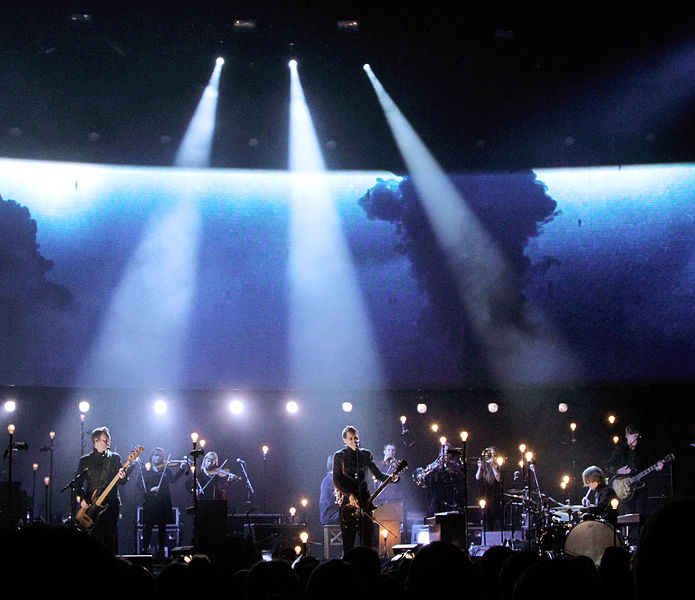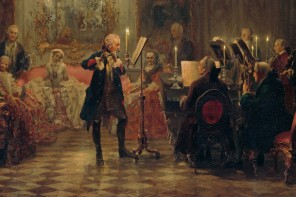 Sigur Ros, the Icelandic post-rock band from Reykjavik, is expanding previous conceptions of what is appropriate music for congregational worship. They claim no direct affiliation to Christianity, yet their music is being played in churches throughout the world, offering practitioners a glimpse into an existence that seems to extend beyond temporal reality. This phenomenon raises some interesting points regarding postmodern church culture, as well as the roles both mystery and awe play within the congregational worship experience.
Sigur Ros, the Icelandic post-rock band from Reykjavik, is expanding previous conceptions of what is appropriate music for congregational worship. They claim no direct affiliation to Christianity, yet their music is being played in churches throughout the world, offering practitioners a glimpse into an existence that seems to extend beyond temporal reality. This phenomenon raises some interesting points regarding postmodern church culture, as well as the roles both mystery and awe play within the congregational worship experience.
One characteristic of the postmodern Church is an increasing comfort with both questioning and mystery. In his book The Sacredness of Questioning Everything, David Dark says: “The call to worship is a call to complete candor and radical questioning—questioning the way things are, the way we are, and the way things ought to be …. This call to worship is deeper than the call to sign off on a checklist of particular tenets or beliefs.”[1] Questioning as a form of worship is yet another mode of the deconstructionism that is coloring postmodern Christian culture. It encourages a boldness to explore endless caverns of unknowing in one’s process of communing with God, because, as Dark says, the list of tenets, or in this case, the list of methods by which one may approach God, has dissolved.
In his book Creator Spirit, Steve Guthrie explores how the work of the Holy Spirit includes remaking, redeeming, and restoring vitality to humanity through the arts. Throughout, Guthrie emphasizes how one’s experience with art often echoes one’s experience in their approach of God, for they are both rooted in mystery. He explains:
Each, it seems, moves us out beyond words and definitions, beyond concepts and logical distinctions. Each opens us up to realities and experiences of great profundity, but realities that wither on the examination table of the philosopher or the theologian. And–if this is the case–then ineffability, the ‘unsayable-ness’ of art and spirituality, isn’t a limitation to be overcome. It is instead precisely the virtue we value.[2]
The atmospheric and ethereal product of front man Jonsi Birgisson’s creativity does not impress a message so much as it creates and invites the listener into a soundscape. Within the context of a worship service, this soundscape is transfigured into an environment brimming with the virtues Guthrie considers.
An ever-present temptation of the spiritual life, a temptation that is often inflamed in congregational worship, is for one to slide into a mental space where the mechanics of worship overshadow and replace genuine participation with the Spirit infused within the worship itself. A benefit of music like that of Sigur Ros is that it holds the listener accountable against such temptations, bringing the worshipper to a place of rest in the midst of the spiritual mystery.
But how can the music of a band who claims no direct affiliation with Christianity be used in this way? In his book Theology and the Arts, Richard Viladesau defends the use of certain categories of music for worship, despite their lack of an explicit Christological message. He claims that the experience of beautiful music results in an exaltation of feeling: “A kind of association of like emotional states allows the experience of the beautiful to serve as an analogy to the awe and desire we feel when confronted with the holy, and hence to call forth a religious attitude.”[3] This soundscape, then, becomes the conduit through which awe is realized. And awe, like a prayer, can be offered up to God, ever-deepening the communion between God and the practitioner.
I find the increasing trust of the sacred potential of popular music refreshing. This phenomenon expands the context for worship and by extension places eternal significance on multiple streams of artistic creativity that have previously been neglected.
Alex Farrell graduated from Belmont University in Nashville, Tennessee with a B.A. in Religion and the Arts. He is an M.Litt student in ITIA currently conducting research for his primary project, which involves evaluating different treatments of Tom Bombadil’s sublimity.
[1] David Dark, The Sacredness of Questioning Everything (Grand Rapids, MI: Zondervan, 2009), 18-19.
[2] Steven R. Guthrie, Creator Spirit: The Holy Spirit and the Art of Becoming Human (Grand Rapids, MI.: Baker Academic, 2011), 2.
[3] Richard Viladesau, Theology and the Arts: Encountering God through Music, Art, and Rhetoric (New York: Paulist Press, 2000), 47.
Image Credit: Wiki




